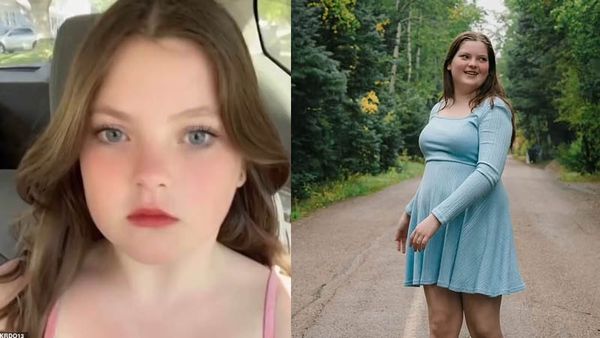
Hi Ugly,
My brother and I have big teeth with gaps. He recently found out he could get them “done” in an affordable way, and now I am doing it, too. There is nothing wrong with my teeth or smile – it’s just gappy, and I think I will look somewhat prettier with the new chompers.
However, since my 30s I have leaned away from beauty standards (somewhat) and try to look after myself like a plant (holistically, rather than aesthetically). I have friends and acquaintances who are getting Botox, which goes against my holistic values. But changing my teeth is also purely aesthetic – as much as I might argue that I’ll be able to eat corn without worrying about bits getting stuck.
I feel like a hypocrite, but I also want to be hot. Help!
- Minding The Gap
*
It’s a strange time for teeth.
For many months now, the internet has been foaming at its FaceTuned mouth for the return of “real” smiles. People love Ayo Edebiri’s crooked incisors (“buck tooth girls rise!”). They long for Margaret Qualley’s micro-gap (“so refreshing”). They’re charmed by Aimee Lou Wood’s overbite (“if Hollywood touches her teeth I’ll riot”). As the viral saying goes, teeth are so back.
Except: even as the general public grows tired of Hollywood’s cookie-cutter veneers, they’re getting their own in droves.
The dental prosthetics market has tripled over the past 20 years and is expected to grow by more than 70% in the next five, with the typical patient motivated by aesthetics rather than health concerns. Those who can’t quite afford the $20,000 – $50,000 price tag in the US (up to £1,200 per tooth in the UK) are flying to Turkey or flocking to barbershop back-rooms for discount work. Those who can afford it are paying extra for “perfectly imperfect” caps – fake teeth just “off” enough to look real. Even braces are making a comeback with adults who see them as a status symbol. “They show that the wearers care about their appearance and can afford to invest in themselves,” reports the Washington Post. (We are a very unwell people.)
Let’s call it The Tooth Gap – the echoing void between our cultural beliefs and behavior. You’re right in the middle of it! So let’s work our way out of this hole together. Why, in the era of embracing real teeth, do you and so many others still feel called to close your diastemas?
For starters: class anxiety. You say you recently learned you could “afford” to have this work done and believe you’ll look “prettier” afterward, and these statements are probably more linked than you think. Pretty, when it comes to teeth, is code for wealthy.
In an essay called Poor Teeth, journalist Sarah Smarsh explains “the psychological hell of having poor teeth in a rich, capitalist country”: the underprivileged are priced out of basic dental care “yet perversely held responsible” – judged, discriminated against – “for their dental condition”. Orthodontia is often out of reach even for the middle class, since standard health insurance doesn’t cover dental. Straight teeth draw a line, then, between the elite and everyone else.
But there’s a loophole. The pearly-yet-imperfect whites of the rich and famous don’t read as “poor” because their class status is otherwise obvious. The unbraced masses may admire celebrities’ defiance of the beauty standard, but don’t necessarily feel secure enough – materially, emotionally – to defy it themselves.
Another theory: after a decade of algorithm-approved flawlessness, the beauty standard has gone flawsome, a term coined by Tyra Banks on America’s Next Top Model. Banks encouraged up-and-coming models to see a physical “flaw” – a large forehead, wide-set eyes or, yes, gapped teeth – as an asset, something to set them apart in a sea of homogeneously beautiful women. Crucially, this quirk could only function as beauty capital if the model embodied the beauty standard in every other way: thin, young, smooth and taut, with otherwise symmetrical and/or desirable features.
Edebiri, Qualley and Wood meet these requirements. The majority of us don’t. When I asked a dentist to file down the jagged tops of my bottom teeth years ago, not a single X user promised to riot on my behalf! Probably because my crowded canines exist amid acne-scarred skin and a double chin. (The dentist said no.)
Given your stance on Botox and other cosmetic treatments, I wonder if you see your gap not as “flawsome”, but as one more “flaw” among many – and one that’s easier and less ethically fraught to “fix” than your fine lines. (Cosmetic dentistry sparks less moral debate because it’s usually chosen for us as kids, unlike Botox, which adults choose for themselves.) Or, maybe subconsciously, you see closing your gap as the best of both worlds. It’ll nudge you close enough to the beauty ideal to boost your confidence, and keep you distant enough to maintain your identity as someone who rejects it.
My advice is to continue minding the other gap: the one between your principles and your plans. Why is looking “somewhat prettier” enough to make you consider violating your values?
Break it down further. What do you think being “prettier” will bring you? Belonging? Self-assurance? Relief from appearance anxiety? Perhaps there are other ways to reach those goals that do align with your values. Join a yoga studio or start a book club. Go to a sex club, if that’s your thing! (Seeing throngs of average bodies in ecstasy will forever change your perspective on pleasure and “hotness.”) Try Cognitive Behavioral Therapy. Get involved in a political organization working to expand access to health and dental insurance. The options are endless.
More from Jessica DeFino’s Ask Ugly:
My father had plastic surgery. Now he wants me and my mother to get work done
I want to ignore beauty culture. But I’ll never get anywhere if I don’t look a certain way
I also recommend streaming the 1987 documentary Gap-Toothed Women, if you haven’t already. Dreamy and defiant – only 30 minutes! – it digs into the positive side of diastemas. In some cultures, gaps are symbols of honesty and good luck. Others see them as mysterious and sexy, or entirely unremarkable. (As one of the interviewees asks: “Half of Indian women have gap teeth – why are they making a movie about it?”) Think of it as an early, pre-rebuttal of Instagram Face, from a time when gappy grins weren’t “resistance” but reality.
Of course, I won’t judge if you get the work done. People do it all the time! It’s hard to make peace with your face! No one lives an ideologically pure life!
I urge you to do a lot of research on this new, “affordable” technology, though. The dream of a beautiful smile can become a nightmare when discount orthodontia is involved, and there’s a chance you’ll end up worse off, or nostalgic for your old teeth – corn chunks and all.







